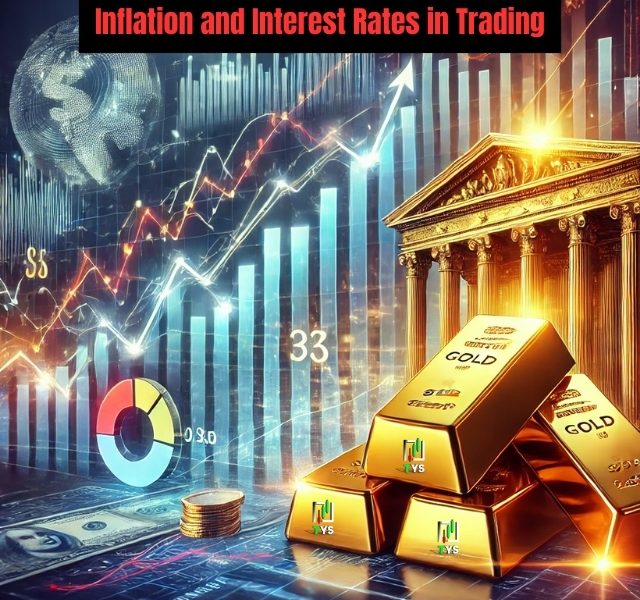Inflation & Interest Rates: Their Impact on Trading
Introduction
Inflation and interest rates are two of the most significant macroeconomic factors influencing financial markets. They affect everything from currency valuation to stock prices, bonds, and commodities. Understanding how these elements impact trading decisions is essential for both short-term traders and long-term investors. This article explores the mechanics of inflation and interest rates, the role of central banks, and strategies to hedge against inflation within trading portfolios.
How Inflation Affects Financial Markets
1. Definition and Market Dynamics:
Inflation represents the rate at which the general price level of goods and services rises, eroding purchasing power. Moderate inflation is seen as a sign of healthy economic growth, but excessive inflation leads to volatility in financial markets:
- Stocks: Inflation can pressure corporate profits due to rising input costs, potentially leading to lower stock valuations.
- Currencies: High inflation typically devalues a country’s currency, making its exports less competitive.
- Commodities: Inflation often drives up commodity prices, particularly in assets like gold and crude oil.
2. Real-Life Example:
In 2021, inflation in the U.S. surged to its highest levels in decades, leading to heightened market volatility. Investors rushed to buy inflation-linked securities like TIPS (Treasury Inflation-Protected Securities) and gold to safeguard their portfolios.

The Role of Central Banks in Setting Interest Rates
1. Central Banks and Monetary Policy:
Central banks like the Federal Reserve or the European Central Bank use interest rates to control inflation. By raising rates, they reduce consumer and business spending, slowing inflation. Conversely, lowering rates stimulates borrowing and investment:
- Stock Markets: Higher rates can negatively impact growth sectors like technology due to higher borrowing costs.
- Forex Markets: A higher interest rate attracts foreign capital, boosting the currency’s value.
2. Policy Example:
The European Central Bank’s decisions during the 2011 debt crisis exemplified how rate hikes amidst high inflation can stabilize a weakening Euro, albeit with significant side effects on growth.

Hedging Against Inflation in Trading
1. Investing in Inflation-Resilient Assets:
- Commodities: Gold, silver, and crude oil are considered safe havens during inflationary periods.
- Stocks in Defensive Sectors: Utilities and consumer staples tend to perform better during inflation as demand for their products remains constant.
2. Using Derivatives for Protection:
Traders can use options and futures contracts to lock in prices or speculate on inflation trends. For example, going long on gold futures is a popular strategy during inflation spikes.
3. Diversifying Portfolios:
Spreading investments across asset classes like real estate, inflation-linked bonds, and international equities can reduce risk exposure.

Practical Trading Strategies During Inflation
1. Forex Trading:
Currencies from countries with stable inflation and higher interest rates, such as the Swiss Franc or U.S. Dollar, are often considered safer bets.
2. Sector Rotation:
As inflation rises, traders might shift their focus to sectors that benefit from higher prices, such as energy and materials.
3. Dividend Stocks:
High-dividend-paying stocks often act as a hedge because they provide steady cash flows to offset inflation.

Conclusion
Inflation and interest rates are powerful forces shaping financial markets. For traders, understanding these factors is crucial for making informed decisions and protecting portfolios during uncertain times. By focusing on inflation-hedging strategies and monitoring central bank policies, traders can navigate the challenges of inflationary environments with confidence.

